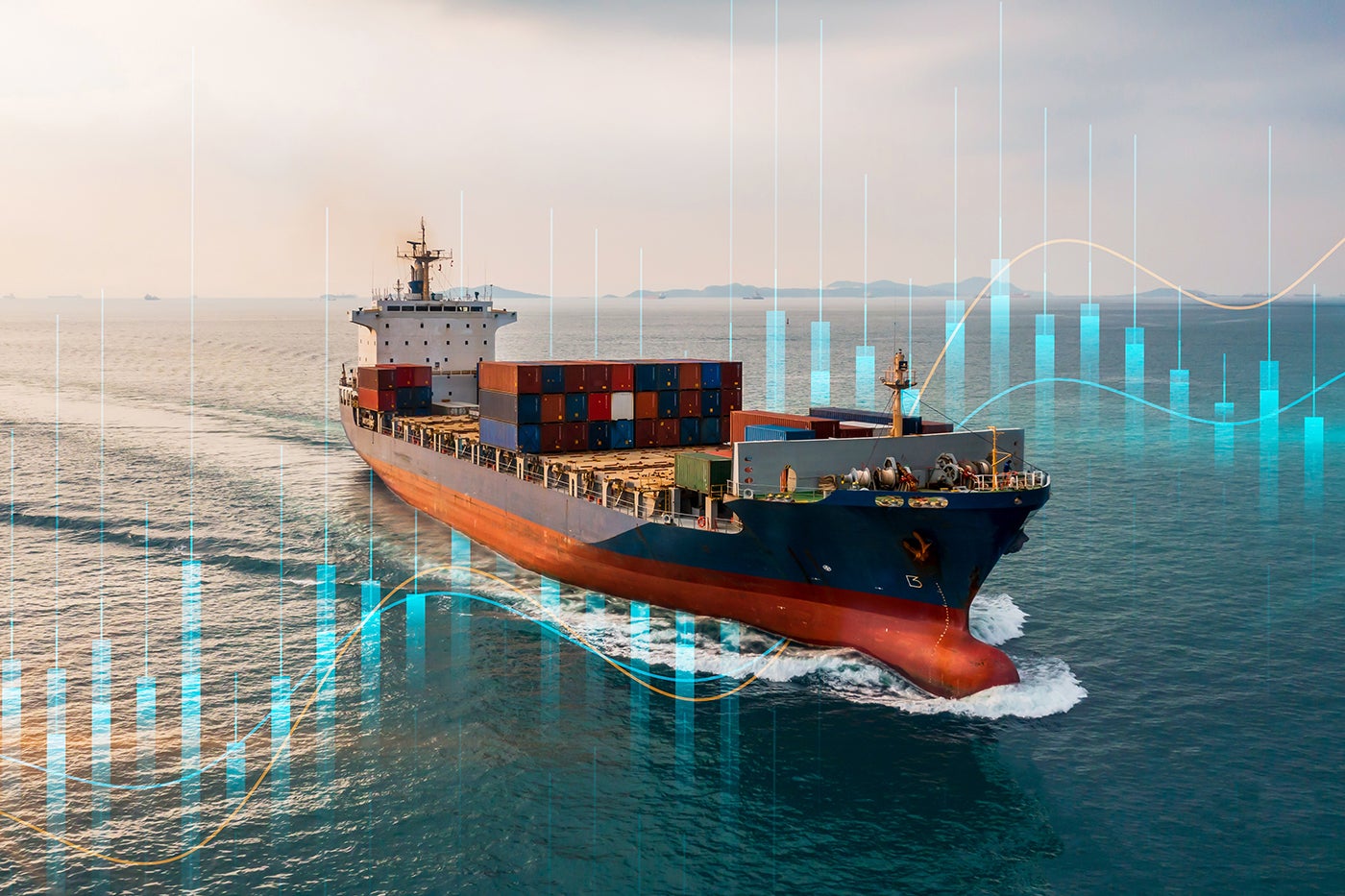Geopolitics and the wider economic backdrop have led to major fluctuations in ocean cargo demand, capacity levels, and pricing. Disruption to shipping routes and the need to balance both spot and contract market cargo pricing put further pressure on carriers to price with an unprecedented degree of accuracy and speed in the face of volatility – and to do all of that cost-effectively.

However, significant obstacles stand in the way of more agile and efficient cargo pricing. Firstly, the fragmented nature of the ocean supply chain contributes to a general lack of data visibility. This makes it hard for carriers to make well-informed revenue management decisions, even as the volume of useful data to be potentially drawn on now exists at such vast scales.

Alongside this, the fundamental approaches and legacy technologies most carriers rely on to make pricing decisions and manage revenue are creaking at the seams, and further amplifying pressures.
Granularity competes with manageability
Hundreds of factors need to be incorporated when carriers make cargo pricing decisions – from basics like container size, route, and commodity type, to additional charges, like bunker and currency adjustments, terminal handling, or peak season surcharges. Throw in rapidly changing demand patterns, and the risk of getting pricing wrong grows.
With all these factors in play, individual price points can reach the millions for large shipping companies. Managing each price point individually within a fast-moving, volatile marketplace
is not a viable approach at scale – especially when the underlying processes that pricing depends on are inefficient and dependent on error-prone human intervention. While carriers group rates to reduce this complexity, this sacrifices the pricing granularity achieved by setting rates independently. All of this has real customer and operational impacts.
How well do you really know your competitors?
Access the most comprehensive Company Profiles on the market, powered by GlobalData. Save hours of research. Gain competitive edge.

Thank you!
Your download email will arrive shortly
Not ready to buy yet? Download a free sample
We are confident about the unique quality of our Company Profiles. However, we want you to make the most beneficial decision for your business, so we offer a free sample that you can download by submitting the below form
By GlobalDataCustomers end up experiencing inconsistency and lack of transparency in quoting, contracting, and booking, as well as invoicing inaccuracies – and wait too long from initial request to quotation. Employees face a high degree of system complexity and variation and spend a lot of time on cumbersome activities that don’t add customer value.
Outdated tech and an over-reliance on processes requiring high levels of manual intervention put a brake on innovation around pricing strategy and models, and inaccurate or incomplete data can lead to incorrect conclusions and poor pricing decisions.
And the carrier organisation itself loses out. Delays and poor control in making pricing decisions result in rates that don’t meet minimum margins or guidelines. Revenue is lost due to incorrect invoices and uncollectable accounts receivable. Additionally, inaccurate billing means additional costs from dispute resolution and strains customer relationships.
Agile and automated ‘referential’ cargo pricing
Given all this, the ocean cargo industry needs a better approach to setting rates if it’s to improve sales conversion, margins, and capacity utilisation. This needs to be anchored in wider digital transformation that can amplify revenue management by giving full visibility of all business data. Simplifying and automating critical revenue management processes is key to this, allowing pricing analysts to focus on strategic areas and activities with the highest returns.
A new and far more efficient ‘referential’ pricing model can reduce the number of price points to a manageable level, focusing on the highest ROI areas by volume, revenue, and bookings. These price points are also the most volatile rates a carrier offers, requiring frequent pricing revisions – and this is where the application of machine learning (ML) is a real game-changer.
Sophisticated algorithms can process and analyse large data sets and variables. By considering internal and external factors, ML can test pricing in different scenarios simultaneously and establish patterns. Pricing analysts can then leverage these ML recommendations and focus on analysing and optimising a manageable number of highest-value price points. These become the base-rate ‘reference’ pricing grades – with value-add ons applied to deliver margins for things like container size, commodity, customer, or handling service.
What could a better cargo pricing future look like?
This model only works if it is operationalised within a single, modern, digital revenue management system – where revenue management software can automate pricing and inventory management to help carriers respond quickly to changes in demand.
Harnessing the massive quantities of data generated daily in ocean cargo through modern analytics is key to this, with actionable insights into customer behaviours and demand trends. Workflow and tool-based automation are also key, simplifying critical revenue management processes, and allowing pricing analysts to focus on activities with the highest returns.
The limitations of legacy technologies and approaches stand in the way of effective pricing and decision-making at the pace and scale the cargo market now demands.
But imagine being able to deliver precise, competitive offers to customers in seconds. Accelerating bid responses with seamless collaboration and automation, delivering highly tailored, competitive offers. Consider the major gains in basic time saving, and the much lower levels of error-based risk – or more accurate invoicing and lower revenue leakage.
One thing is for sure – revenue management and pricing are at the heart of cargo competitiveness and can’t afford to be ignored, with market volatility here to stay.








